You really only need a few essential cooking tools and utensils to cook a myriad of tasty home recipes. But when it comes to outfitting your kitchen, it is easy to get sucked into buying all the cool, flashy gadgets available.
This guide will help you navigate the world of kitchen tools and help you choose some essential quality equipment to make your cooking life easier.
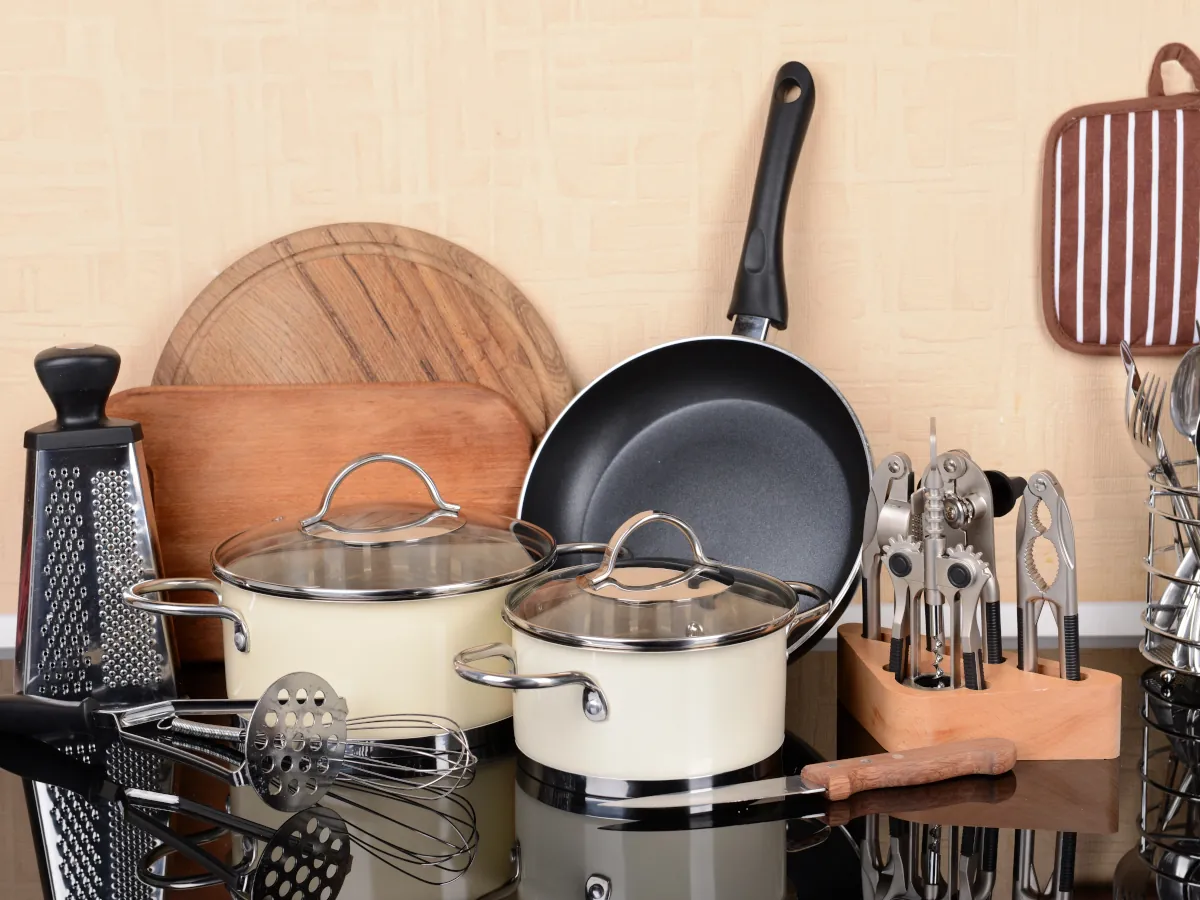
This post contains affiliate links for which we may be compensated if a purchase is made through the links provided at no extra cost to you. For more information, please read our affiliate disclosure.
Stick With Quality Cooking Tools and Utensils
When selecting cooking tools and utensils for your home kitchen, always keep in mind that you want them to be easy to clean and maintain - and maybe even repair.
This is why, for most things, I always recommend using stainless steel.
Stainless steel is functional, easy to clean, and does what it's supposed to do. You don’t have to worry about melting a hole into a bowl by accident if it's left on a hot burner or melting rubber spatulas in the pan while frying fish.
Sticking with higher quality cooking tools and utensils may cost more upfront, but if taken care of, it will last you many years of everyday use!
Knives
What's a kitchen without knives!? While there is virtually a whole world of kitchen knives available to you, you really only need two knives to get started with your cooking tools and utensils collection.
You can learn more about some of the different types of kitchen knives & their uses.
Every kitchen should be outfitted with a good quality chef's knife. Usually, between 6 and 10 inches in length, chef knives do the brunt of the work in any kitchen. From doing meal prep to slicing meats, and any other task you can think of, chefs' knives can do it all.
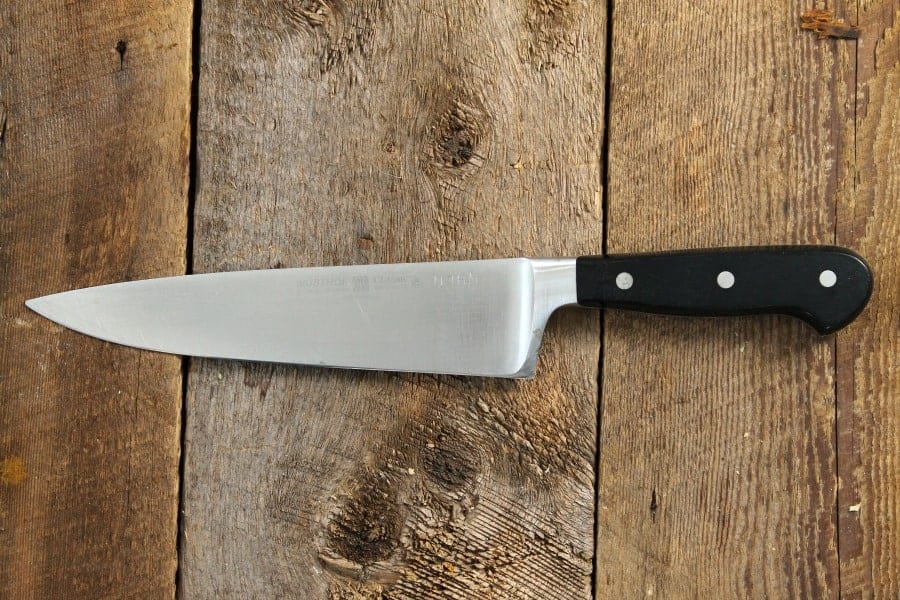
Pick a good quality knife that feels comfortable in your hand, and very important, isn't too heavy! Heavy knives get uncomfortable quickly, especially if you only cook occasionally.
You'll also want a smaller paring knife, which is useful for small everyday tasks that might not require a full-fledged knife.
Chef's Pick: While anything but cheap, this Wusthof chef's knife is a classic beginner knife for most culinary students. It is solidly built with a hard steel blade that will stay sharp for long periods of time. This knife will last you a lifetime if properly cared for.
Pots & Pans
Alongside knives, pots and pans are the bread and butter of the cooking world. Without them, very little would actually get done.
With so many different brands, types of materials, and styles of pots and pans available, you can read a more detailed guide in Outfitting Your Kitchen | Pots & Pans. (coming soon)
For everyday household use though, I would recommend investing in a 'middle of the road', stainless steel set. Something with 10 - 13 pieces. This will get you set up with a good variety of shapes and sizes of pots and pans, that can be used for most everyday use.
Chef's Pick: I would recommend this set of stainless steel pans as they will last a long time if taken care of. While not non-stick, stainless steel is naturally non-stick if heated before adding oil to the pan, this prevents you from ending up with pans full of scratched surfaces that need to be replaced in 5 years.
Cutting Boards
Just as with knives and pans, cutting boards come in a variety of shapes, sizes, and materials.
Used for doing meal prep, slicing roasts, butchering chicken and fish, and other tasks, a cutting board is basically your easy to clean countertop. The keyword here is 'easy to clean' cooking tools and utensils.
While wood cutting boards look fancy and have their place in a kitchen, they are not as multi-purpose as commercial-grade plastic cutting boards. Wood tends to be harder to clean especially if you work with raw meats such as chicken and fish, and can discolor and warp.
If you can invest in both! A wooden cutting board for cutting vegetables and ready to eat foods, and a plastic one for preparing raw food items. this also helps prevent contamination!
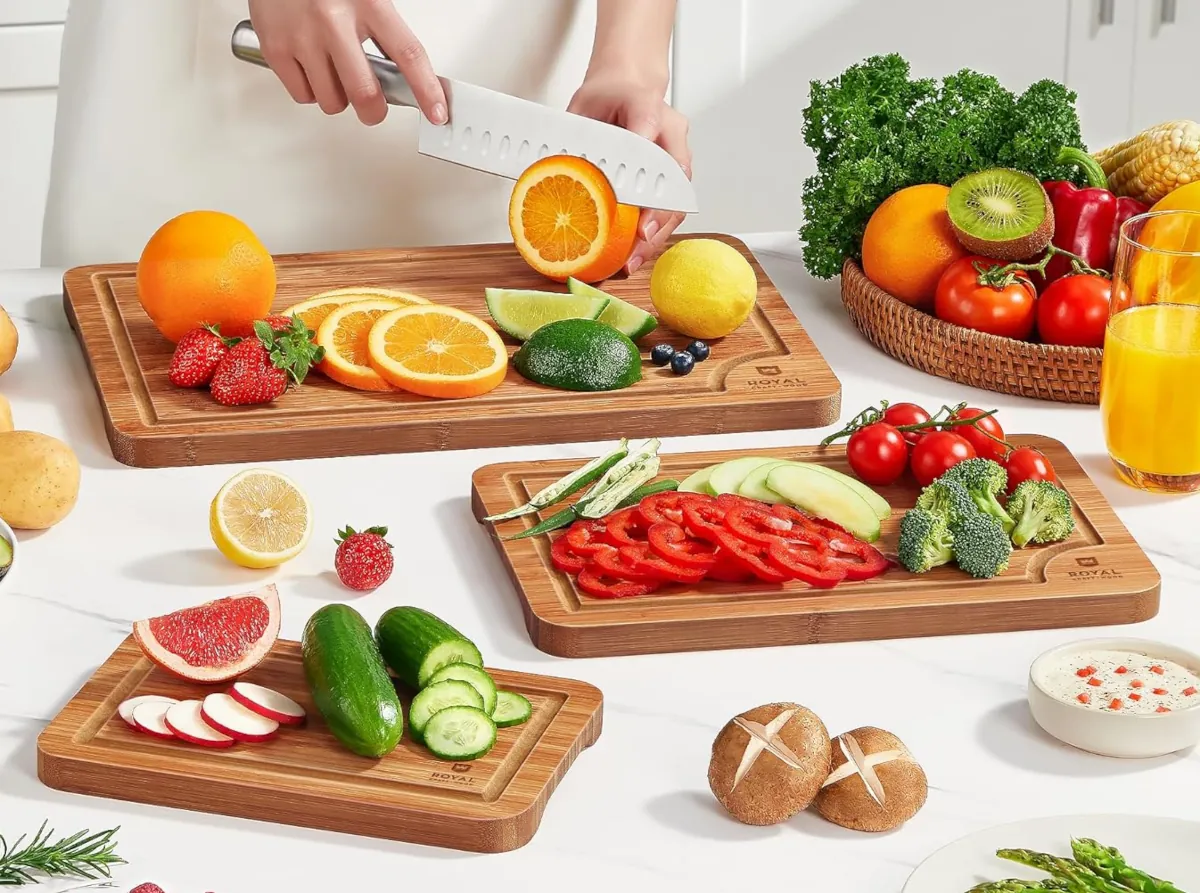
Chef's Pick: A commercial-grade thick plastic cutting board is easy to clean and sanitize while being cut and stain-resistant.
Measuring Tools
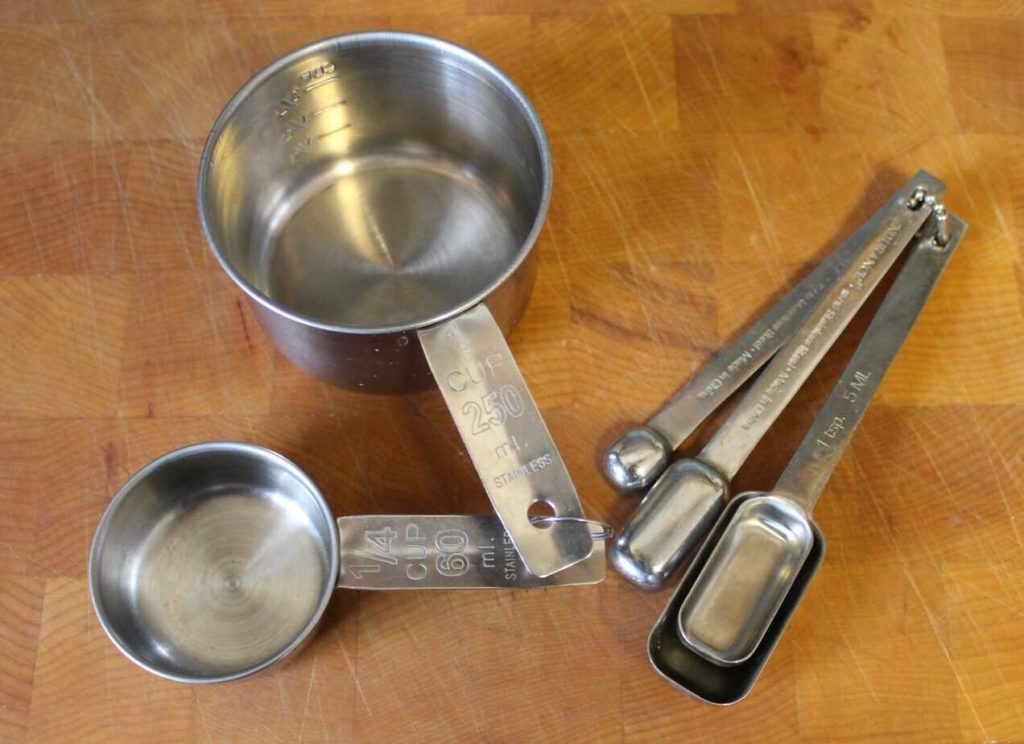
When it comes to cooking and baking from scratch, being able to recreate recipes accurately is important. In cooking, you may be able to take on a more free-handed approach (you can often simply “eyeball” how much of something you need to use), but when it comes to baking, you really need to be exact.
This is where various measuring tools come into play. From measuring spoons to scales, here are a few measuring tools you should always keep in your kitchen between your cooking tools and utensils.
Measuring spoons are an easy and cheap addition to your kitchen drawer. Select a good quality pair made of metal. Ideally, a pair that won't bend or break when tossed in the drawer or dishwasher. Choose a pair that also includes metric measurements for extra-precise measuring, which is ideal when making your own spice mixes at home!
Chefs Pick: These super sleek stainless steel measuring spoons come with a narrow 'spoon' to allow you to scoop from narrow jars and containers such as spice jars!
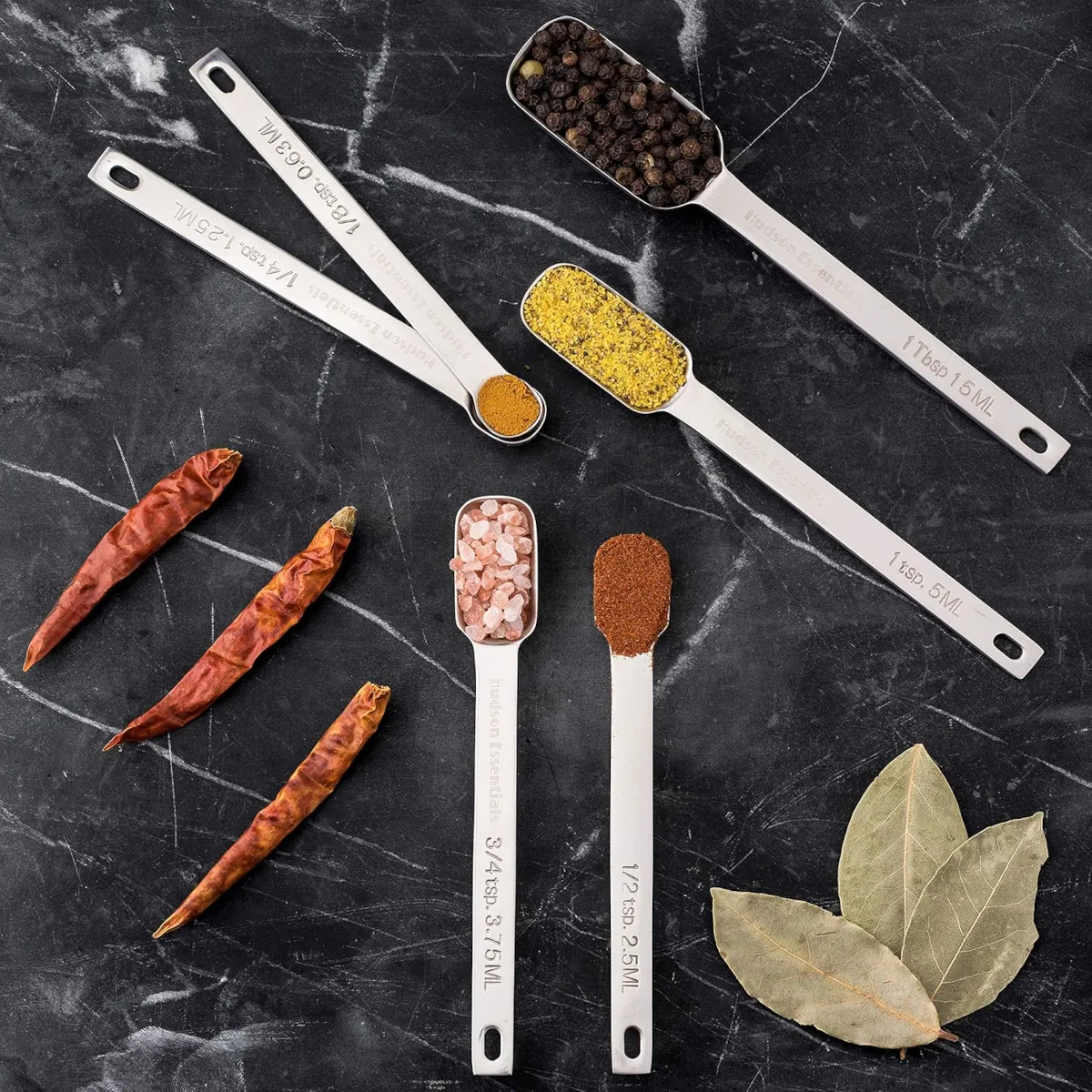
Measuring cups, just like measuring spoons, are a cheap and easy addition to your repertoire of cooking tools and utensils. I use mine almost every day. They are great for measuring out the flour for muffins or bread I am baking. I also use them to simply add some stock to a soup. Again, choose measuring cups that will last and have both metric and imperial measurements.
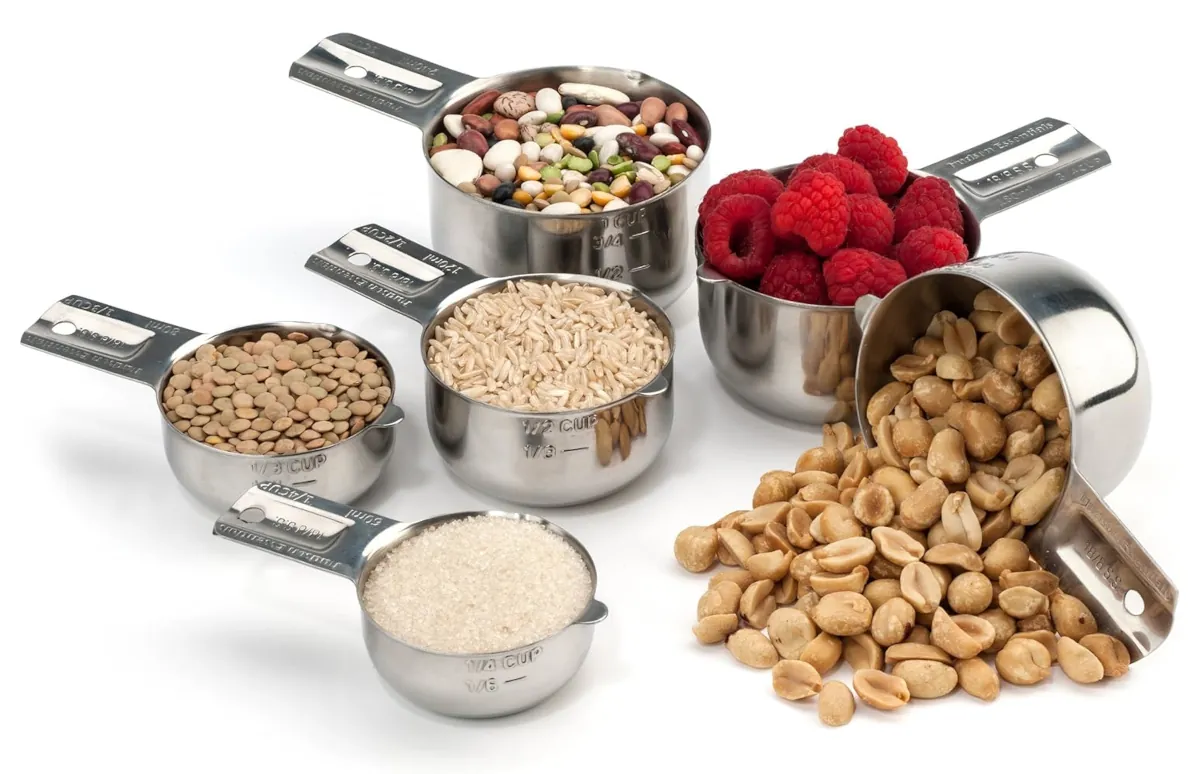
Chef's Pick: Besides my regular set of measuring cups, I also like to keep a larger set of these Pyrex measuring cups. They are great for easily measuring and pouring liquids.
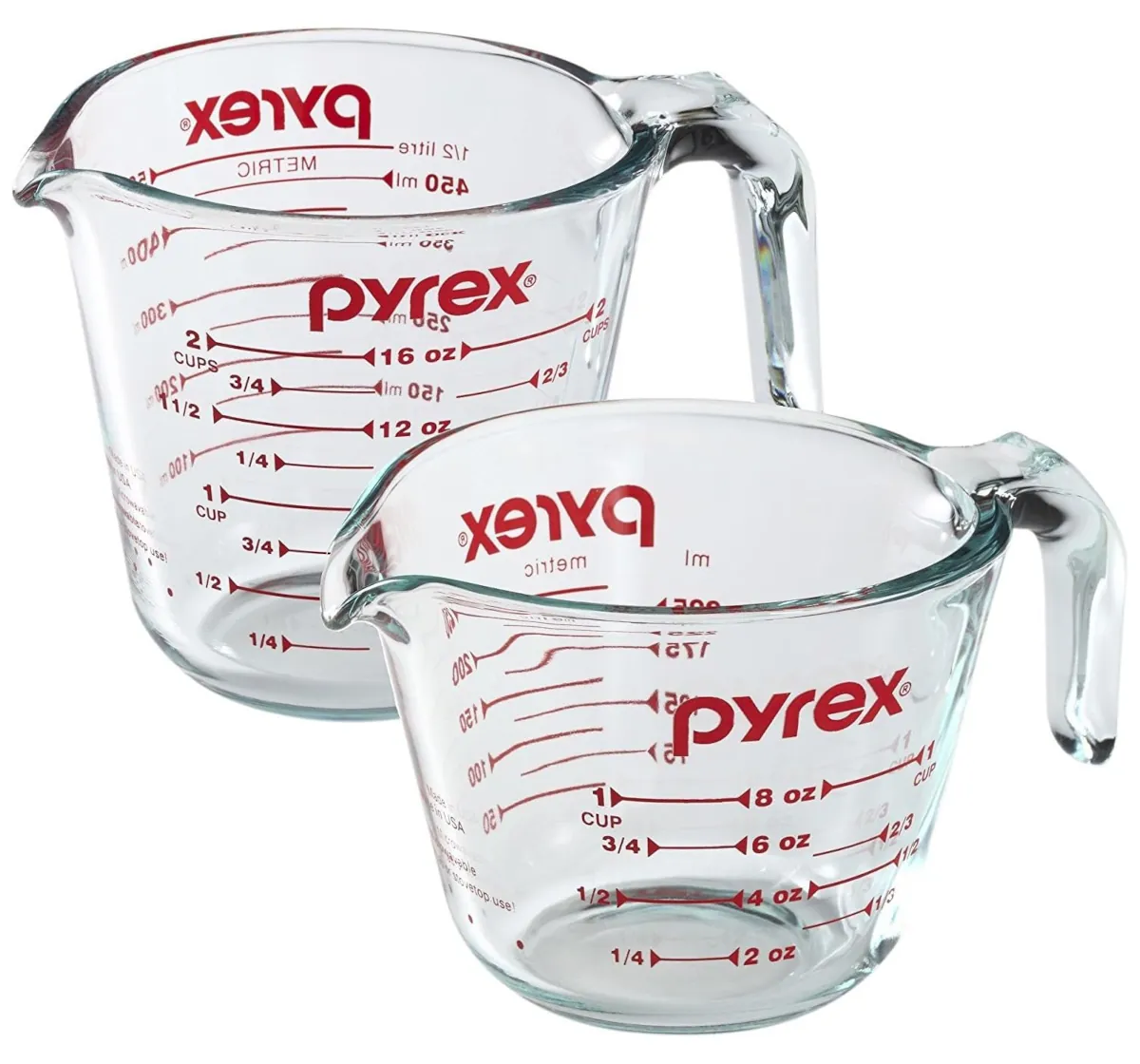
Scales are a useful tool to have if you do a lot of baking at home. While I do have a scale in my kitchen, I don't use it nearly as often as my measuring cups or spoons. Some recipes do call for measurements by weight (the weight and volume of say flour will not be identical), which is when scales come in handy.
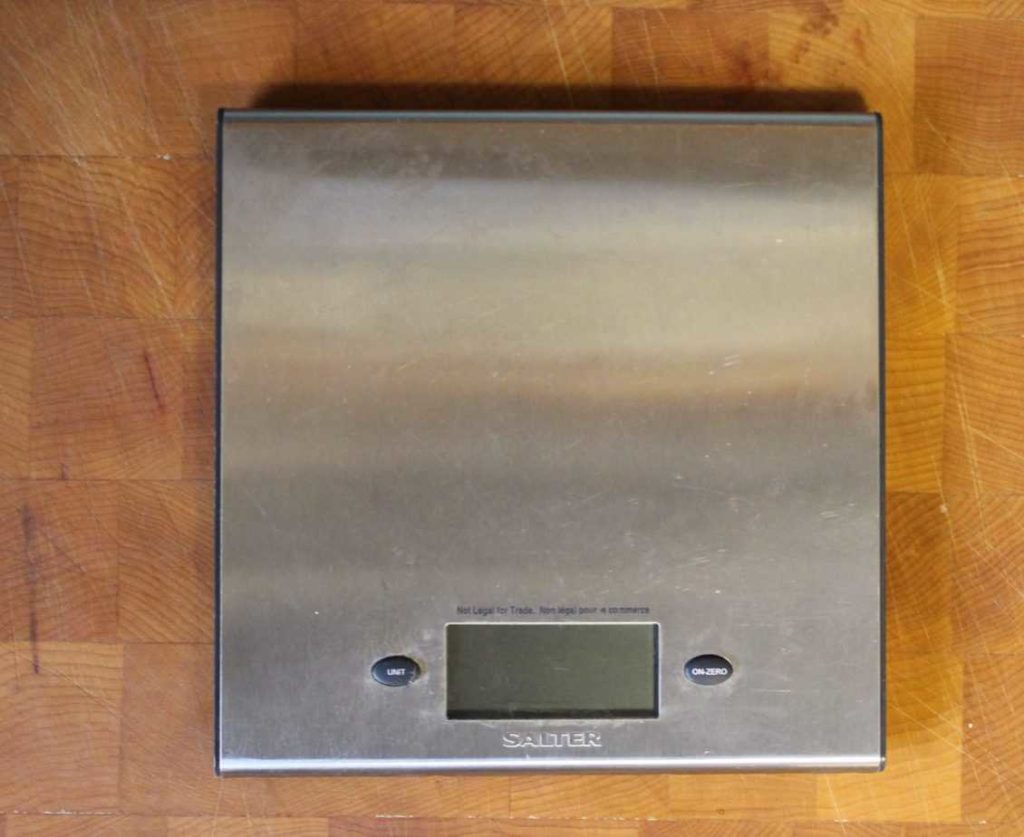
I love digital scales for their accuracy, but they do require a battery, which can run out at the most inopportune times. Mechanical scales while not as accurate (and they need to be recalibrated occasionally) require no battery.
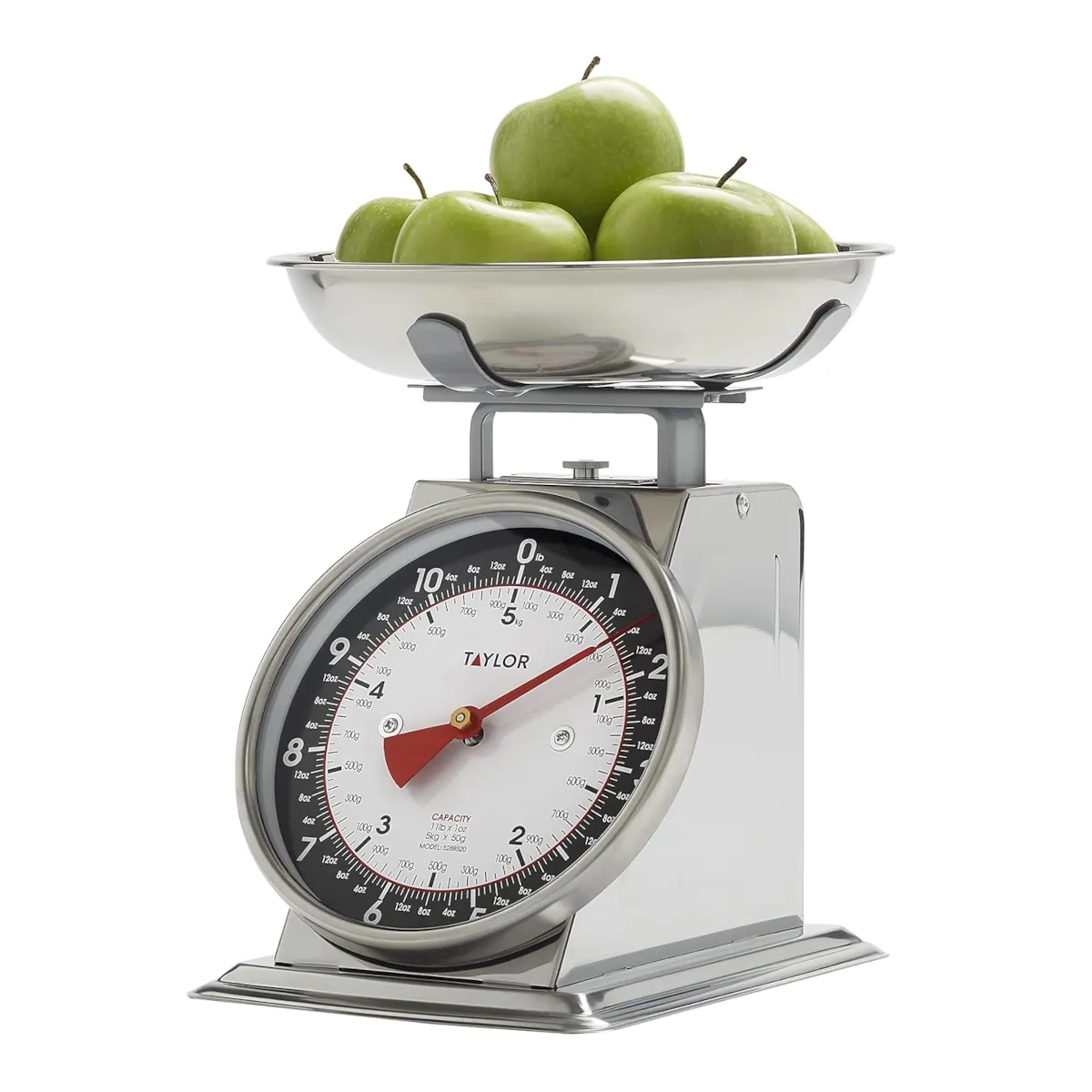
Chef's Pick: When it comes to a scale, this is all you'll need at home. With the touch of a button, you can switch between metric and imperial measurements, as well as tare the scale (set to zero).
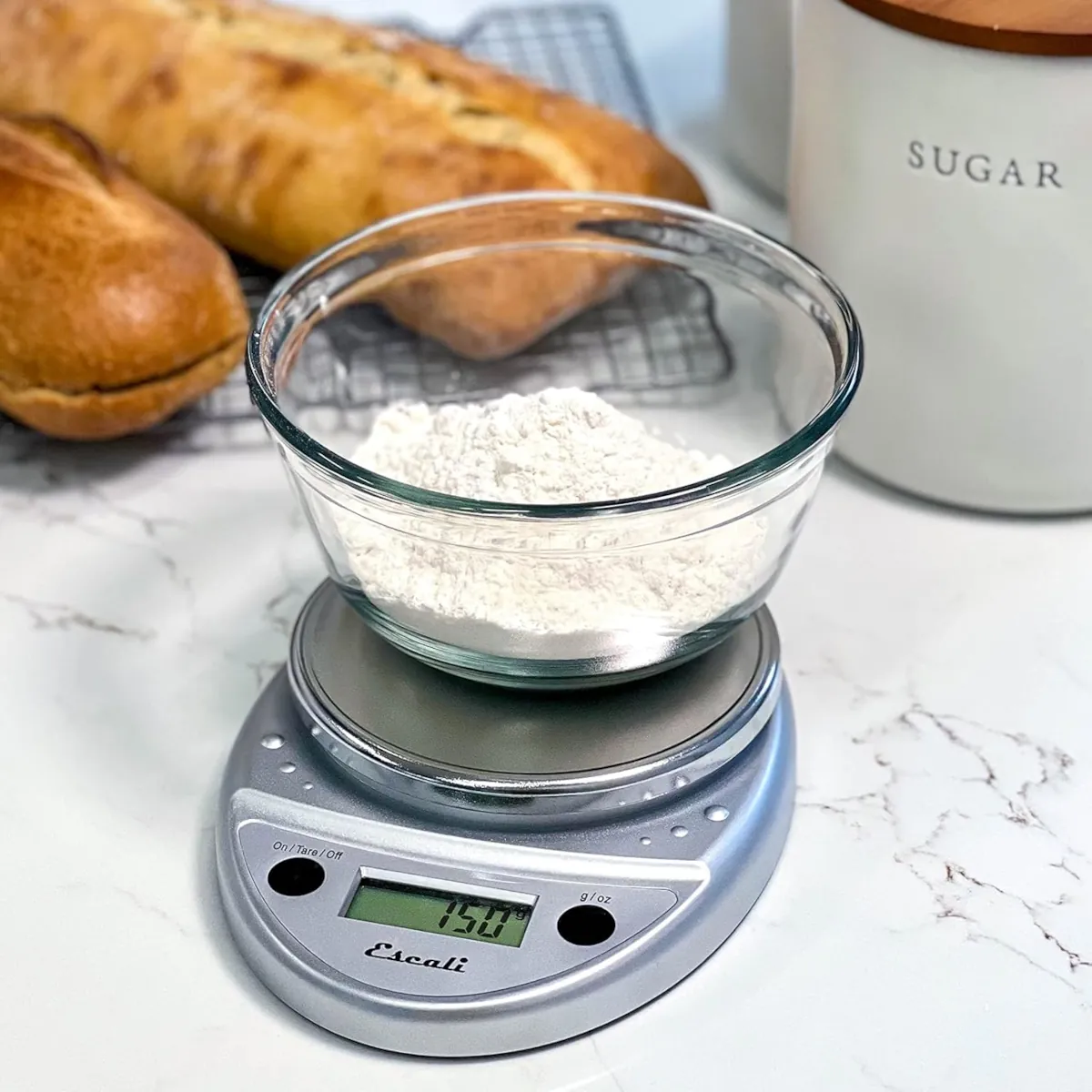
Bowls
Having a good set of bowls is an invaluable addition to your cooking tools and utensils. I use my bowls for everything from cooking to collecting produce from the garden. Bowls can be used for a variety of things. Making dressings, marinating meats, tossing vegetables, storing leftovers in the fridge, or even as a serving bowl for salad!
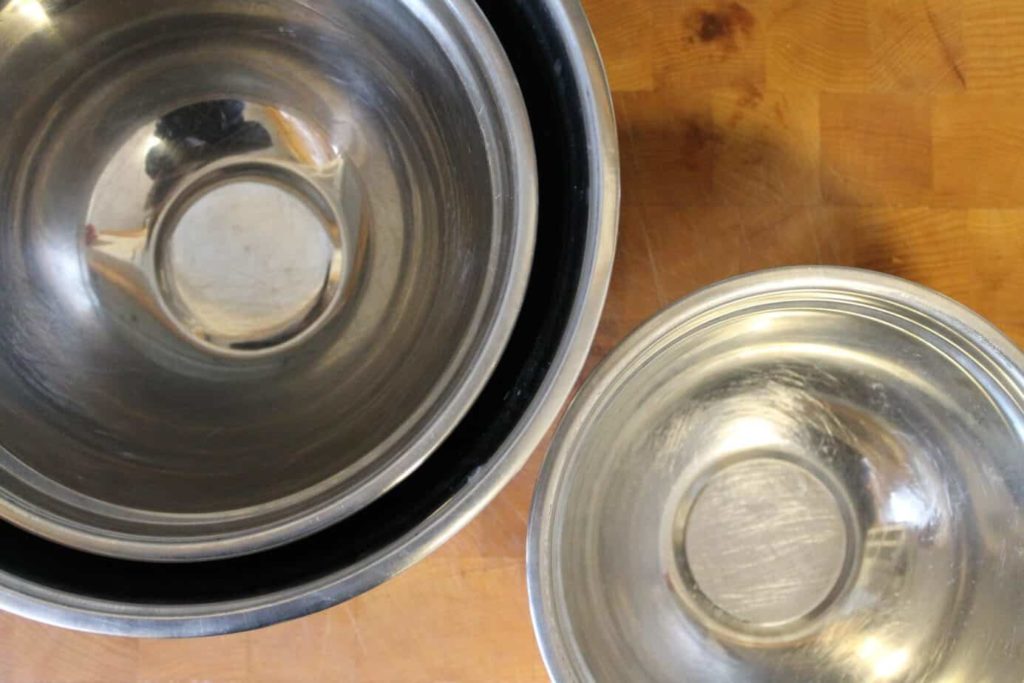
I recommend having 3 different sizes. A small, medium, and large bowl. This will allow you to perform a wide variety of tasks. How big or small a set you get is ultimately up to you and the amount of storage space you have.
Chefs Pick: This stainless steel set of bowls easily stacks into the largest bowl for easy storage. They are great for meal prep, baking, or cooking, and are easy to clean.
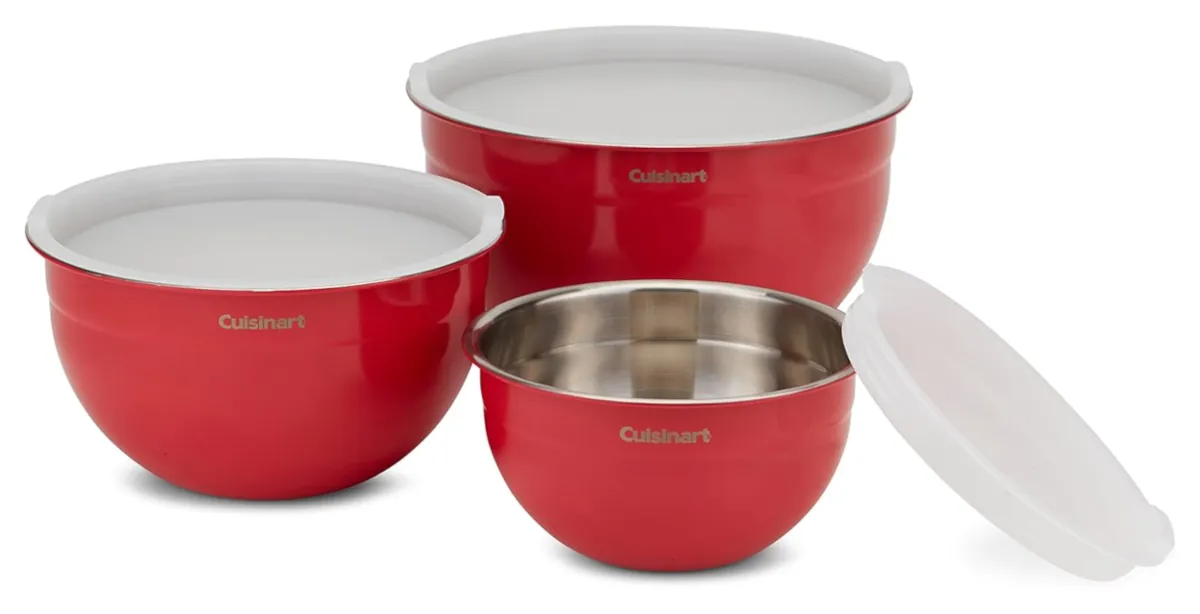
Along with a set of bowls, a decent wire whisk will come in handy when baking and making dressings or sauces from scratch.
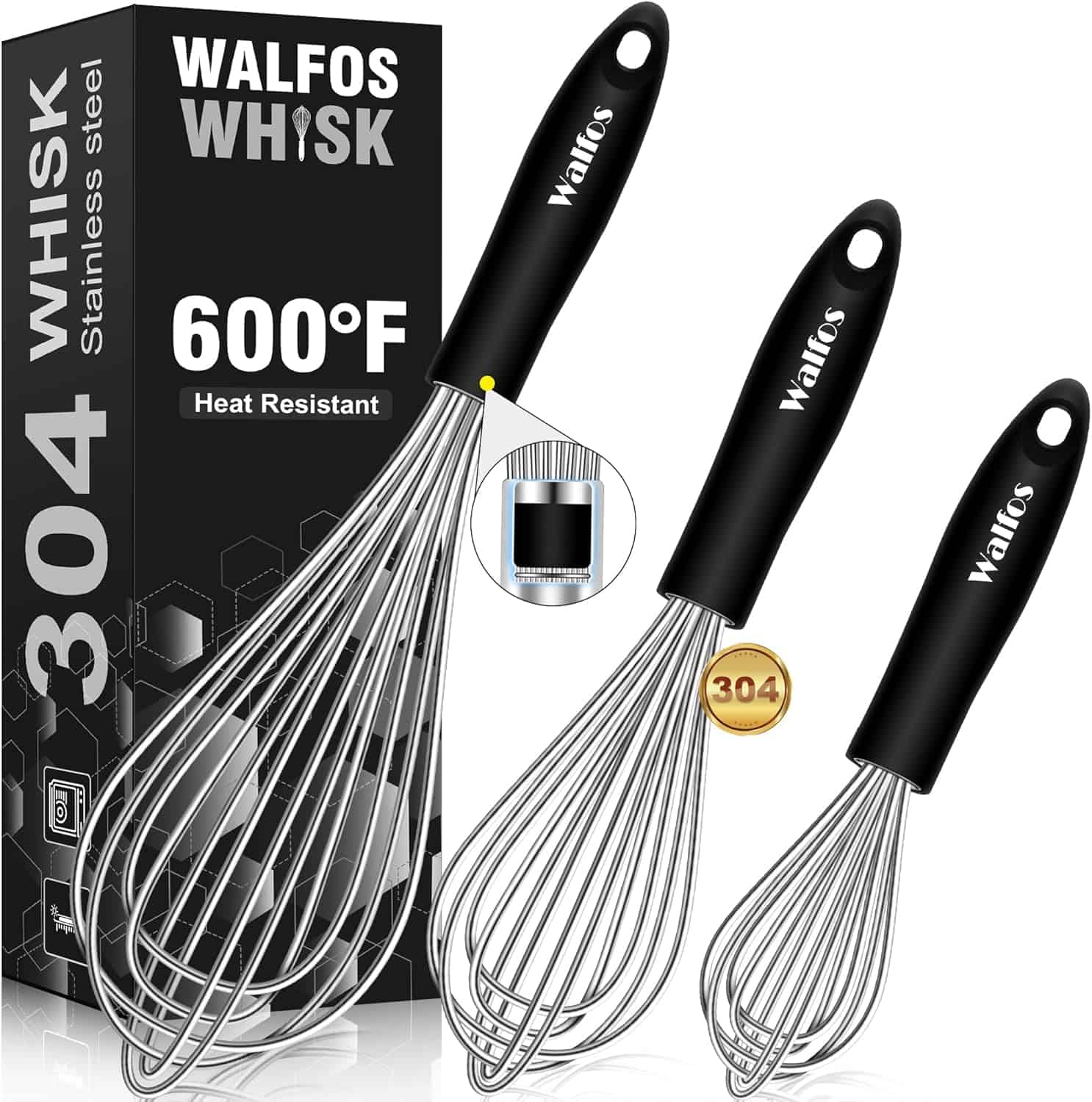
Colanders & Sieves
Another very useful tool to have in your home kitchen, along with your cooking tools and utensils, is a colander or a sieve (or both!).
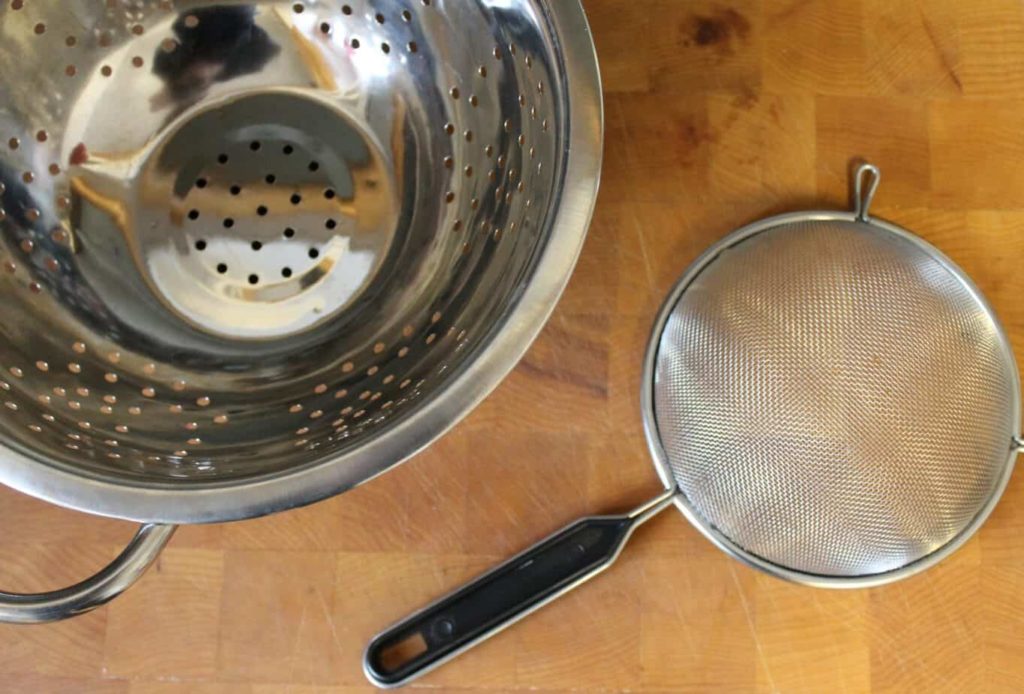
Regardless if you are straining pasta, fishing out bones or vegetables from a soup or stock, or rinsing rice to remove the starch before cooking it, these are great to have around.
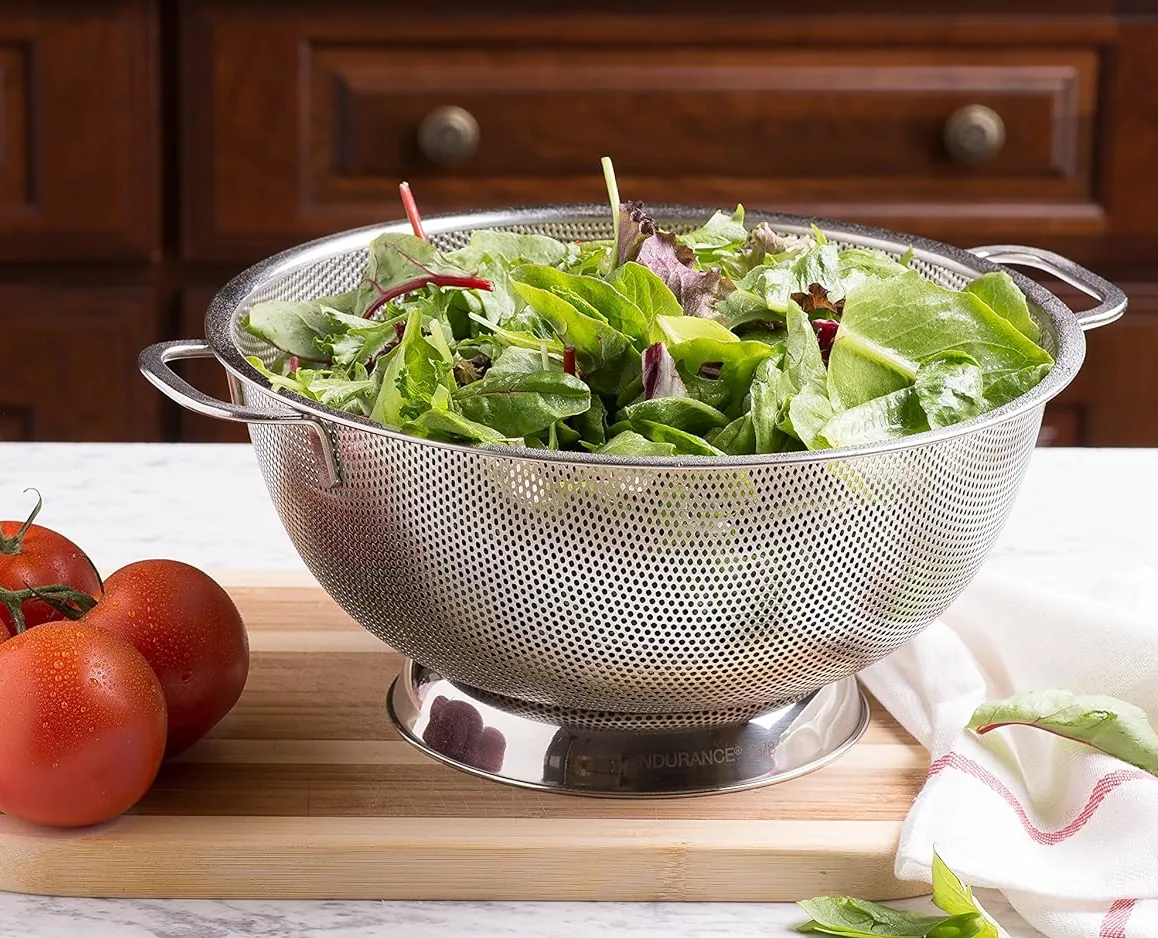
If you can only choose one, pick a sieve since the holes are smaller and you can strain a larger variety of items with it. Colanders are good for large batches of things, but you can't strain rice with it for example.
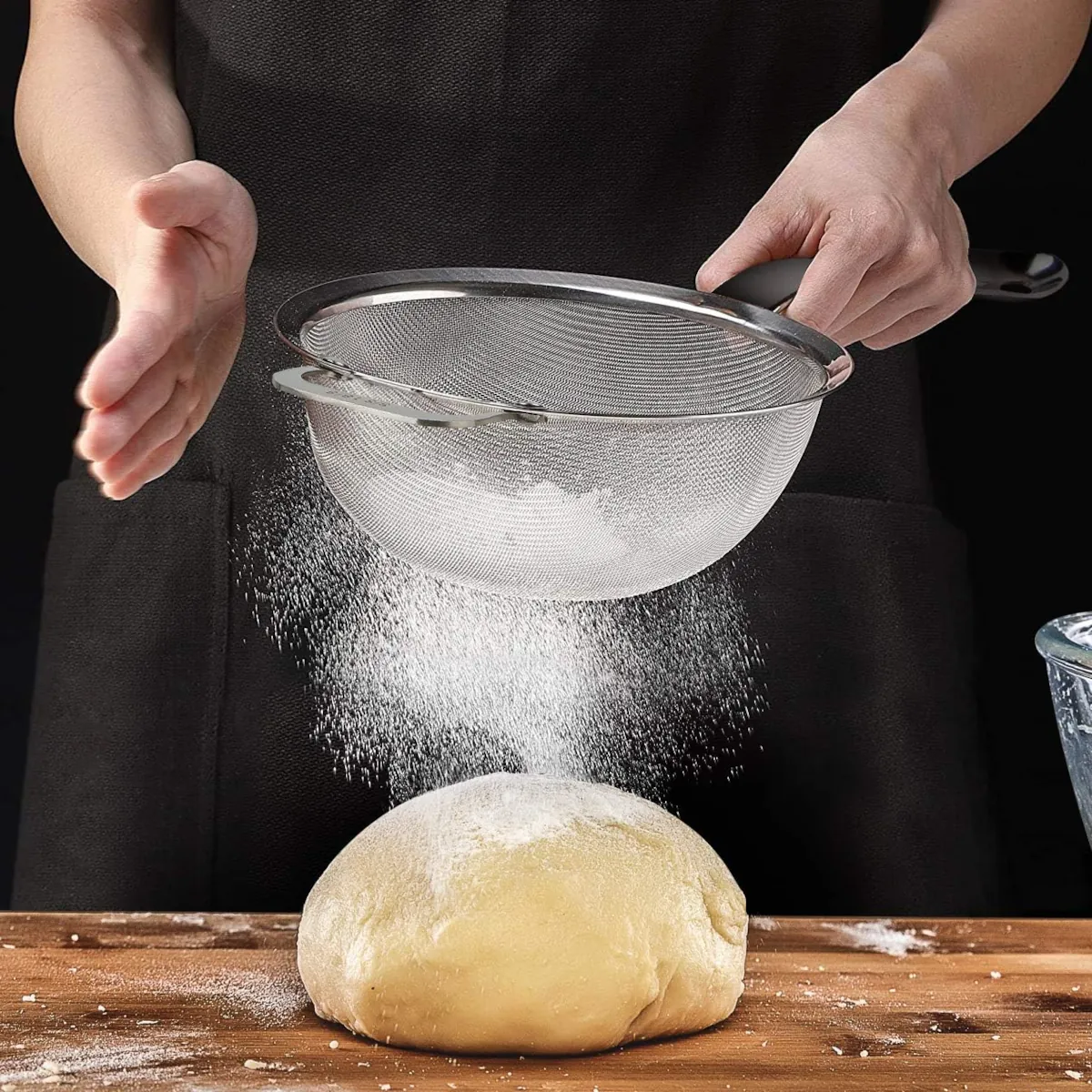
Chef's Pick: If you want to strain soups and broths as the professionals do, invest in a chinois. These fine mesh strainers allow virtually no solids to pass through and are great for straining consommes, high-quality stocks, and puree soups.
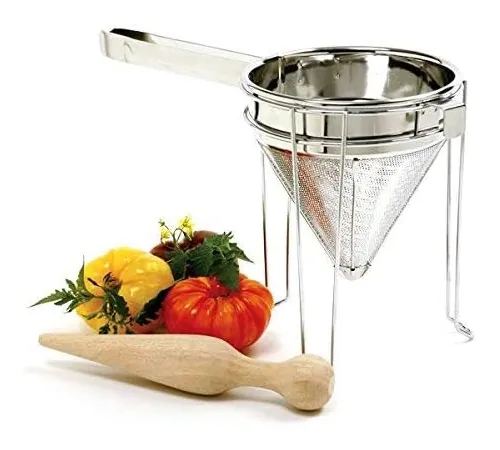
Miscellaneous Tools
Besides the larger pieces of equipment mentioned above, a few smaller cooking tools and utensils make your life substantially easier if you have them in your kitchen.
Spatulas
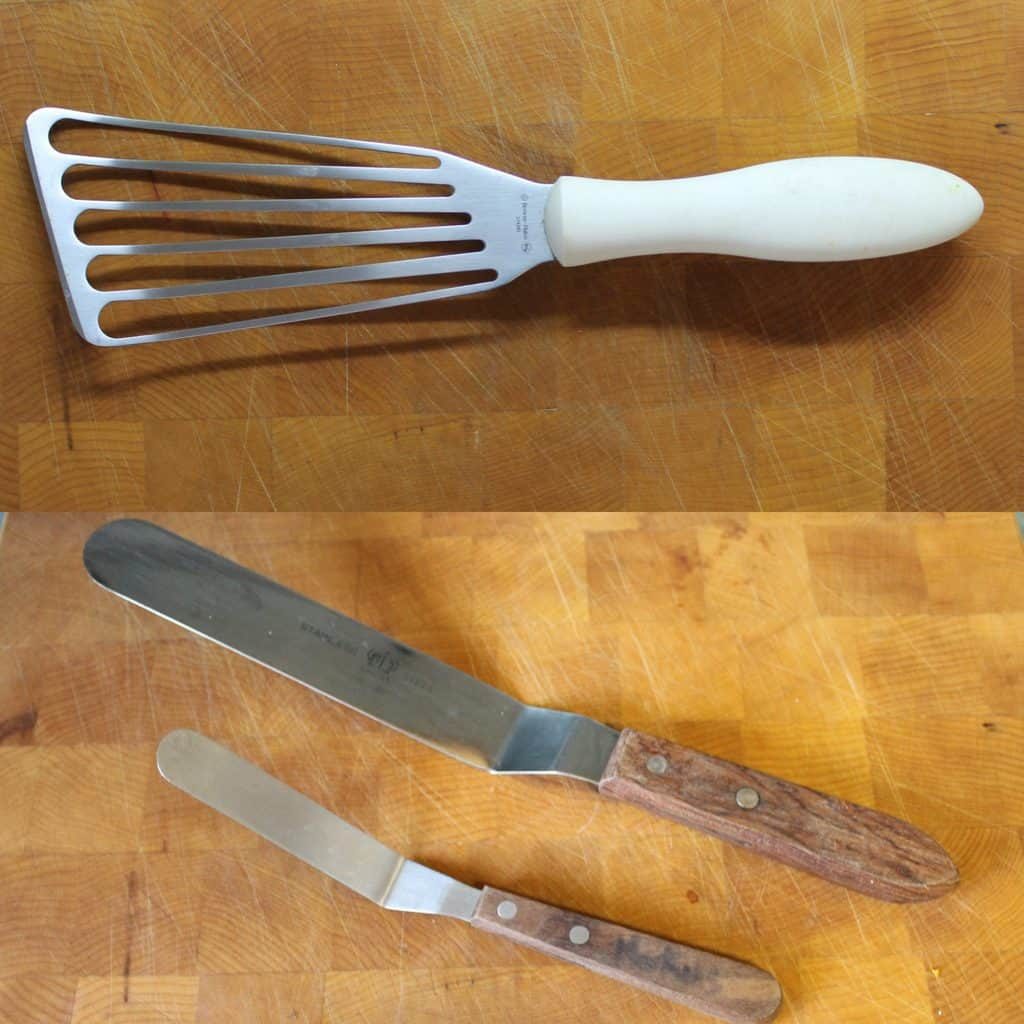
Spatulas come in many different shapes, sizes, and materials. Heat resistant rubber spatulas are very versatile and can be used for baking, cooking, and various other tasks such as emptying containers to get every last scrap (such as chocolate!).
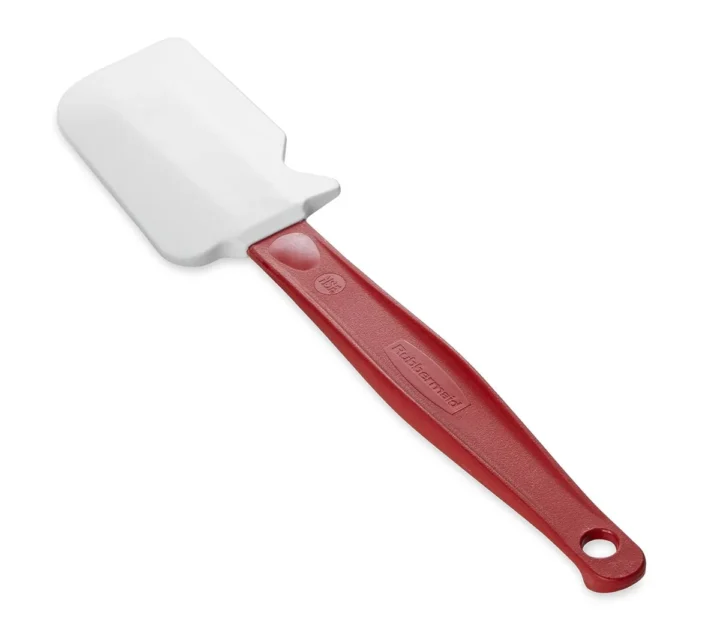
Since they are specially made to be heat resistant you don't need to worry about them melting in your pot. They are the most common multi-purpose spatula in kitchens within your cooking tools and utensils.
- Offset Spatulas or palette knives as they are sometimes known, are great for use in different pastry applications, such as crumb coating a cake, spreading chocolate, or lifting delicate items while plating. I have even used one, heated until glowing red in a flame, to 'brulee' a creme brulee.
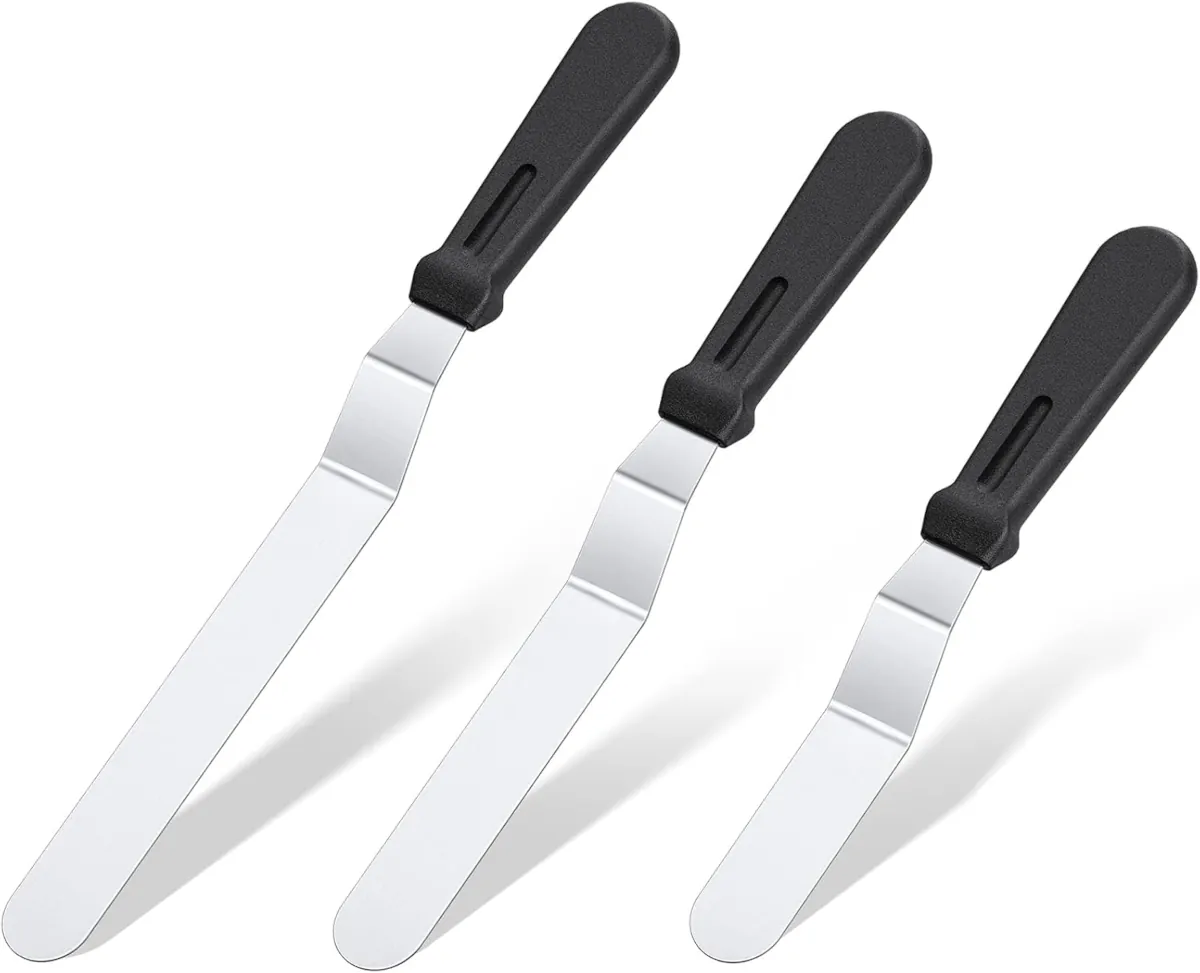
- Fish Spatulas, like the one pictured at the top left, are ideal for flipping delicate items, such as when frying fish or other meats in a hot pan. The limited surface area created by the open spaces reduces the chance of the spatula sticking to the food.
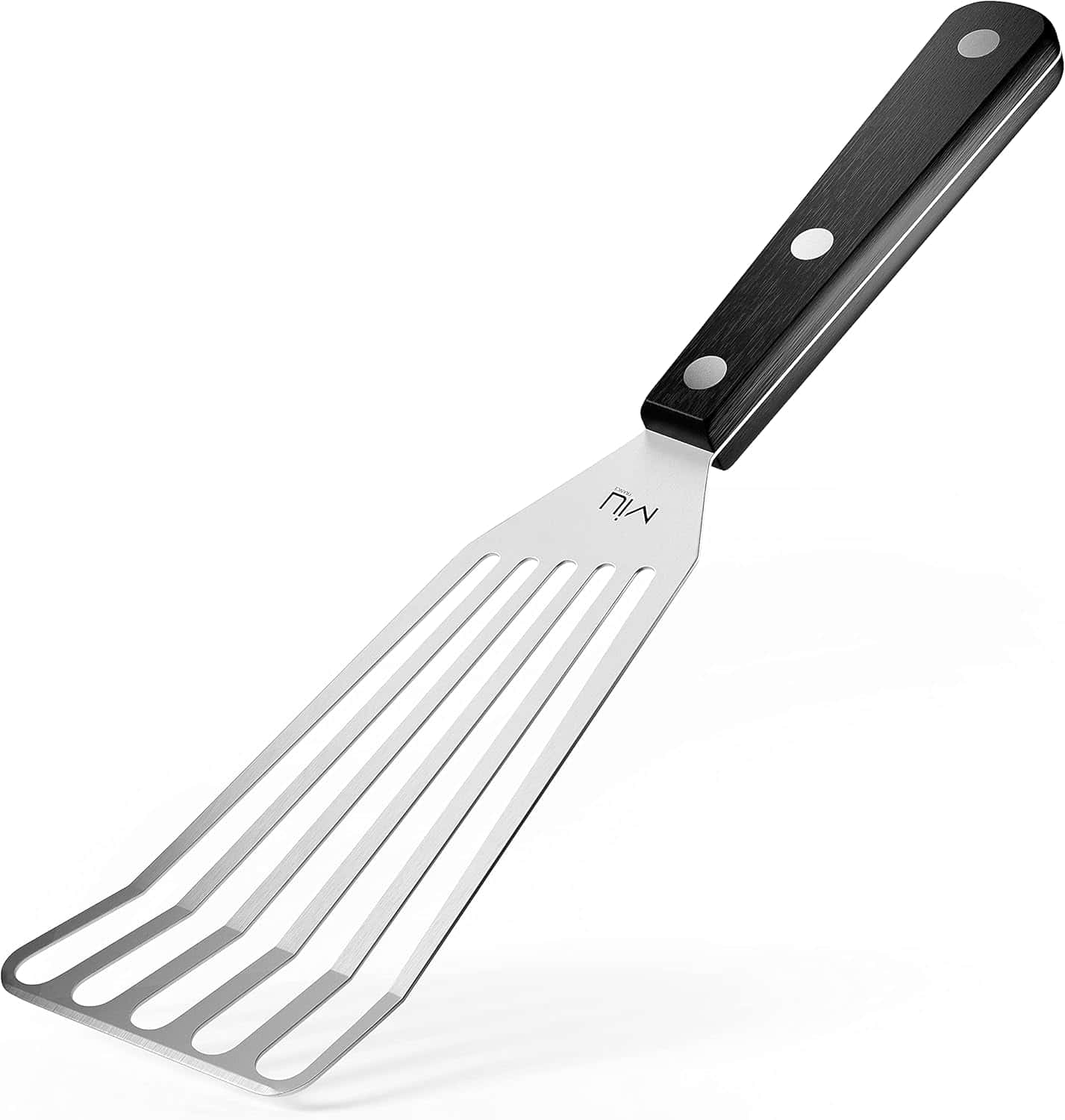
Thermometers
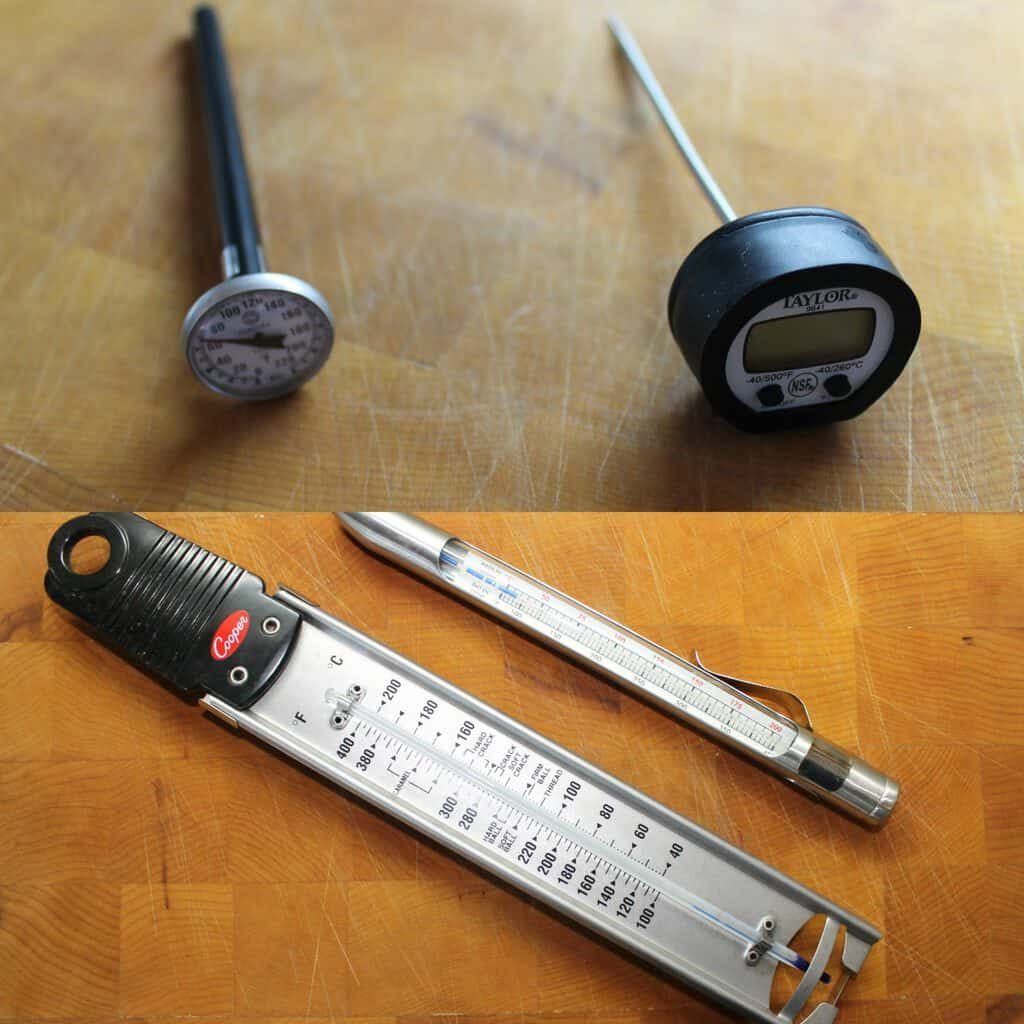
Thermometers are a staple tool to have in your kitchen as a beginner cook. Without them, it can be difficult to know if some items have been fully cooked, or safely for that matter.
You can pick from digital or mechanical thermometers for regular use. However, I would personally suggest going with a digital one as they are easier to use and are more accurate. Just make sure to pick a thermometer you are able to re-calibrate with a reset button.
Digital thermometer

Mechanical/dial thermometer
Sugar/candy thermometers are used in baking to bring sugar to very precise temperatures for different stages of caramelization. Sugar temperatures will affect the hardness of the sugar (thread, soft ball, firm ball, hard ball, soft crack, hard crack), once it cools.
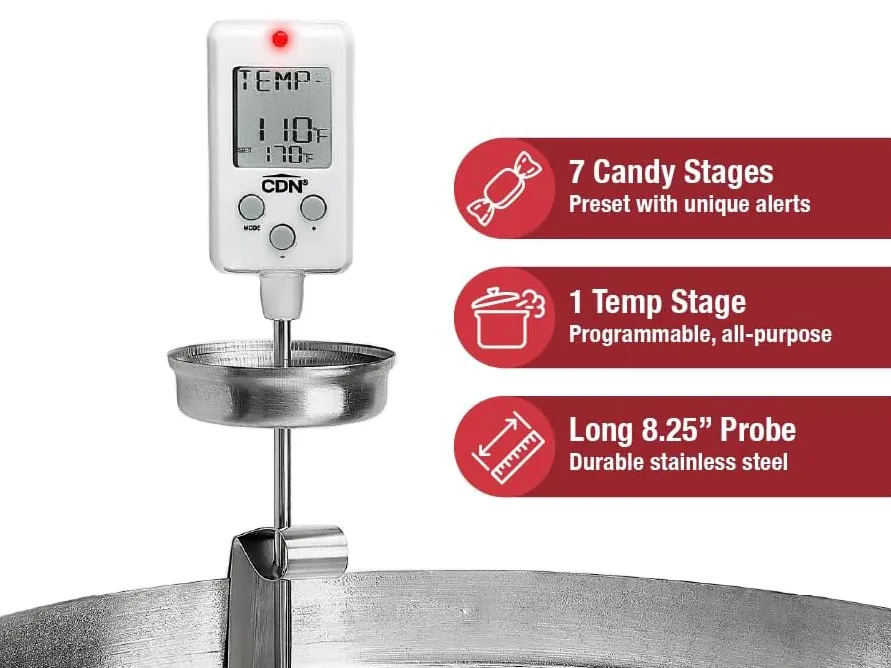
Vegetable Peeler
A little self-explanatory, vegetable peelers are most often used to peel vegetables! (Imagine!!) They are easily overlooked though and a good quality peeler can make your life a lot easier if you need to peel any amount of potatoes or vegetables.
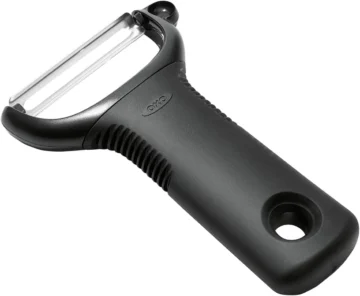
Hand Towels
Also called dishcloths or bar towels, these simple little kitchen towels can be invaluable in a kitchen. Used to dry equipment after washing, as well as cleaning up spills or drying your hands, I always have at least 2 or 3 hand towels in use at any given time.
Chefs Tip: You can even use a dry hand towel to help move hot dishes or pots in and out of the oven. Just make sure it is folded over, and not wet!
Keep Reading
I hope this guide has provided you with a good set of cooking tools and utensils to outfit your kitchen. Are you looking for more information though? Keep reading any of these articles.
Outfitting Your Kitchen Series:
- Types of Kitchen Knives And Their Uses
- Pots & Pans (coming soon)
- Specialty Tools (coming soon)
Did you find this guide useful?? Comment & Rate it below, then tag me on Facebook. For more DIY gardening tips & from scratch recipes follow me on Facebook & Pinterest

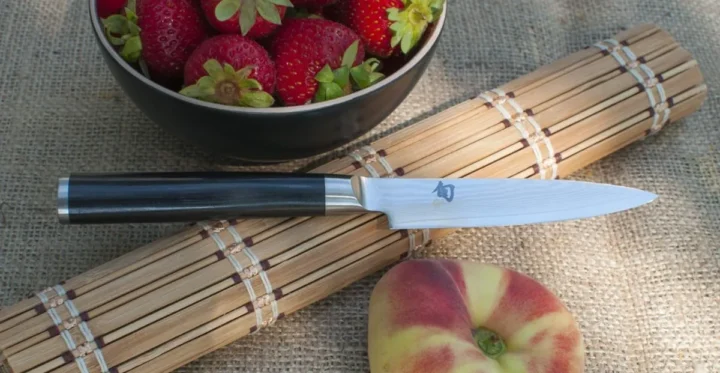
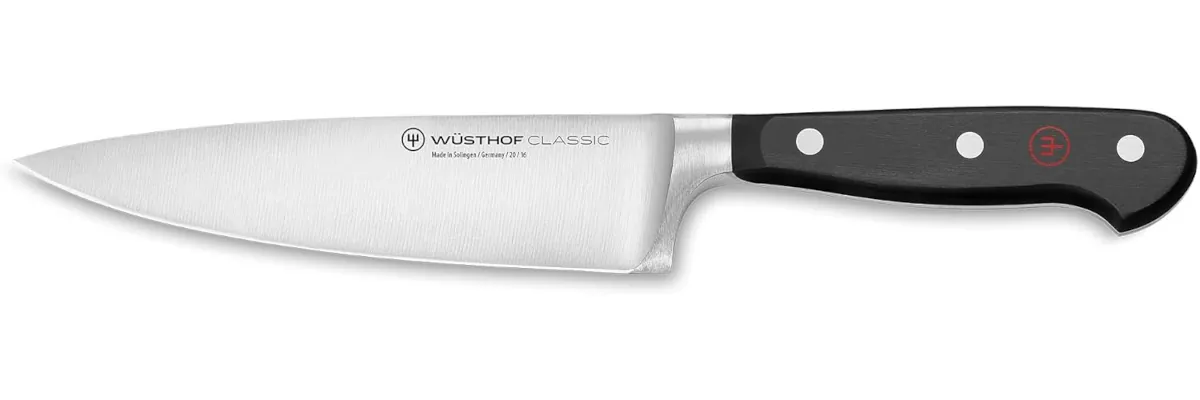
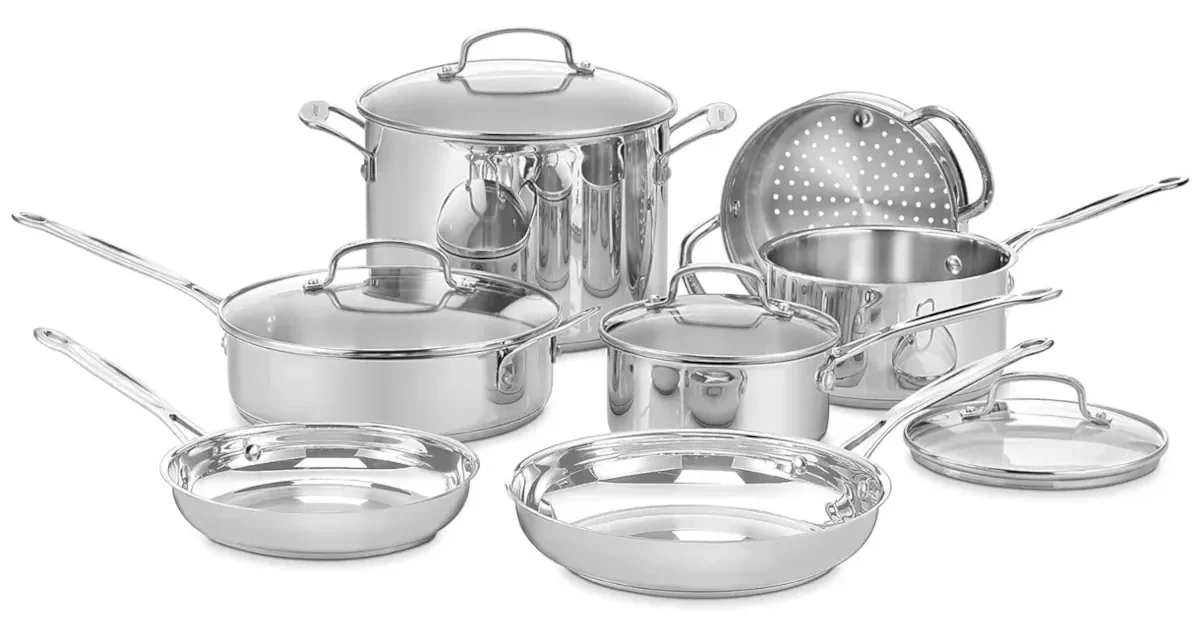
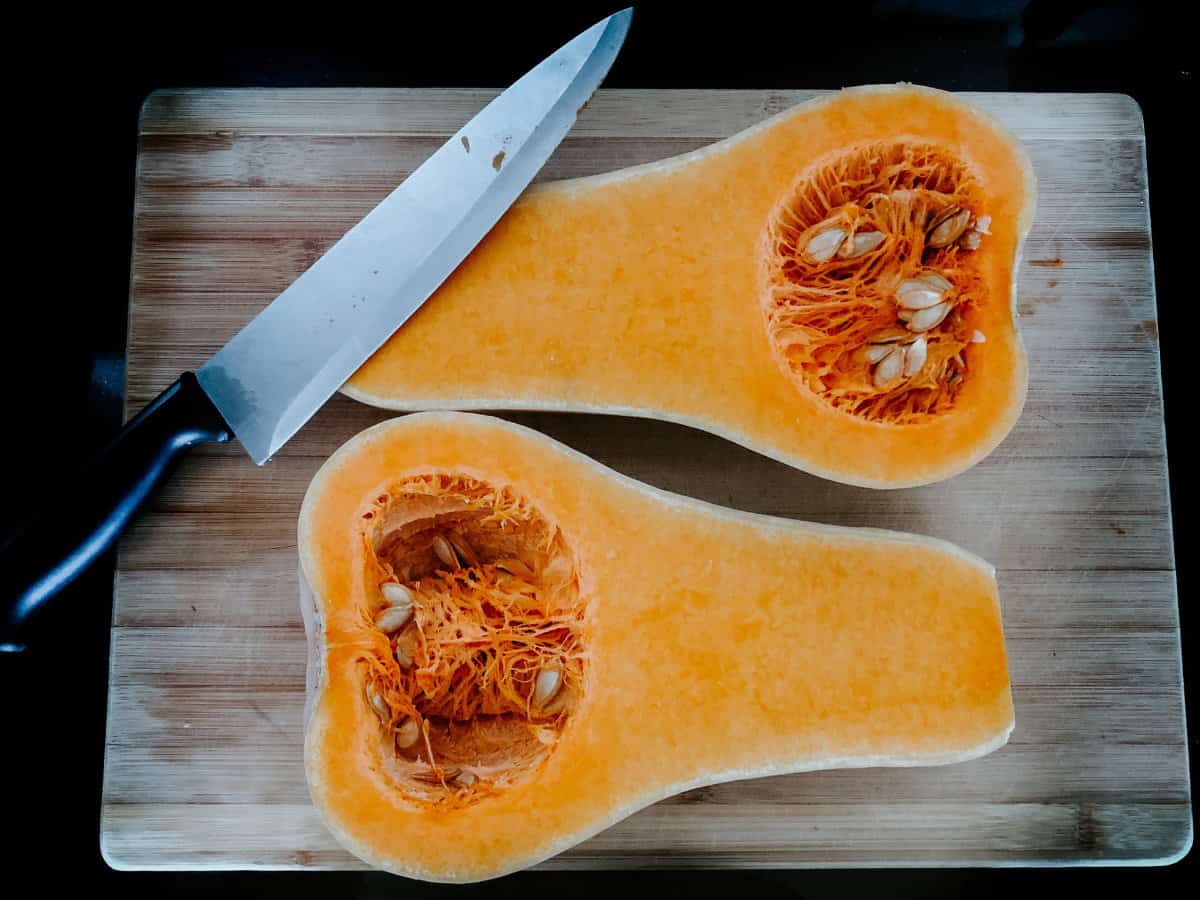
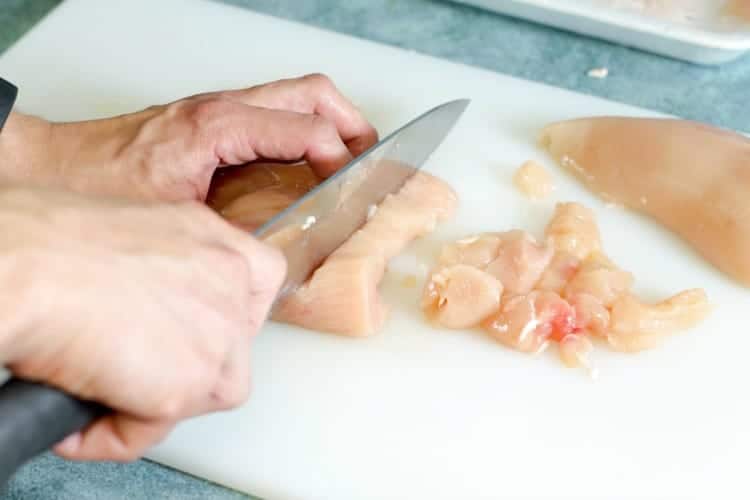
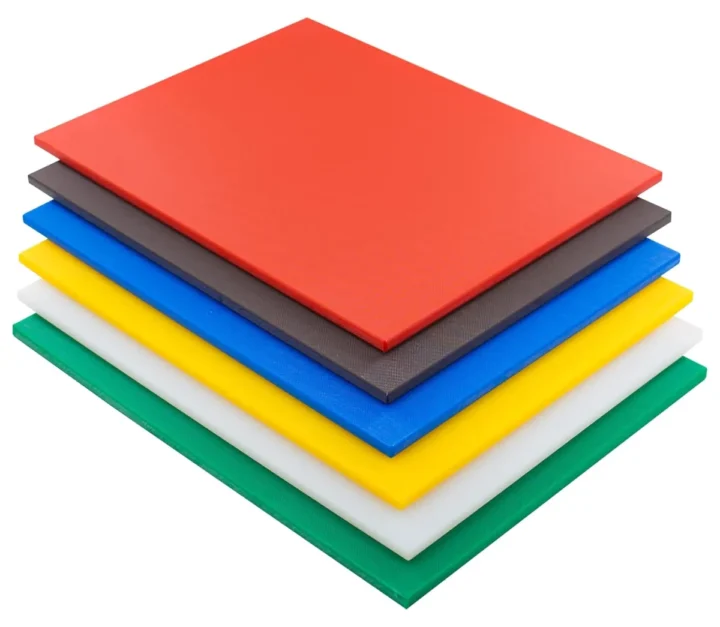
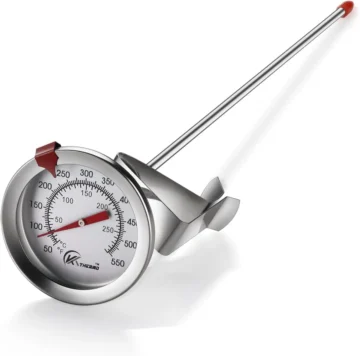
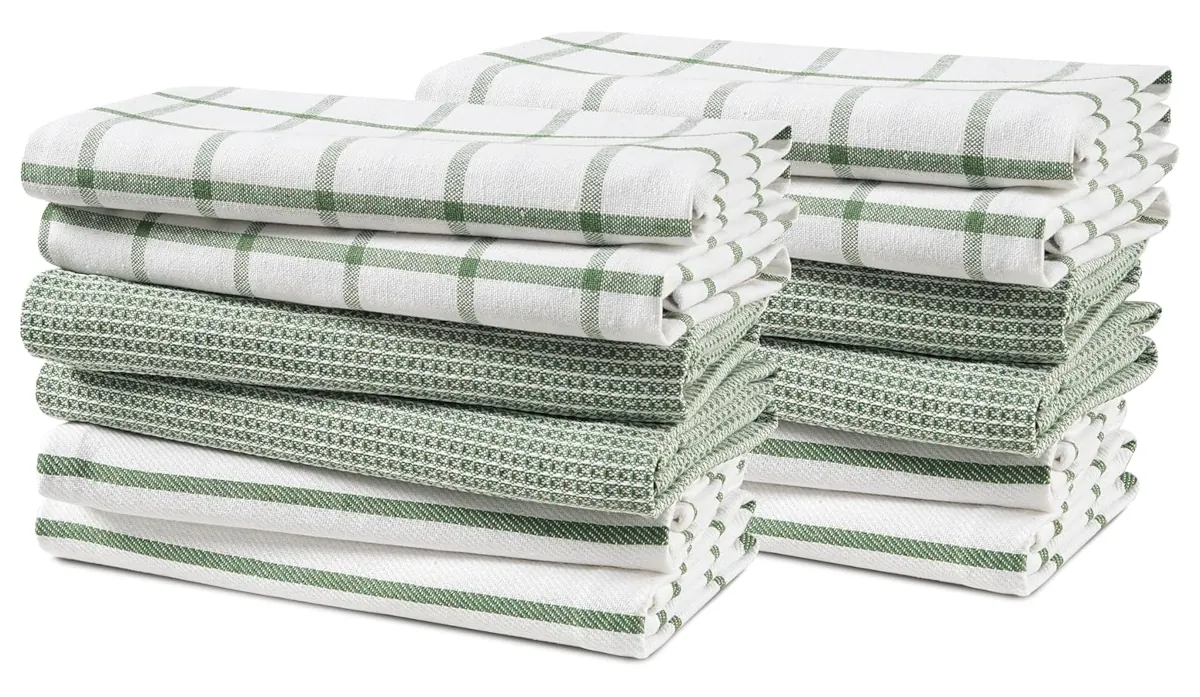
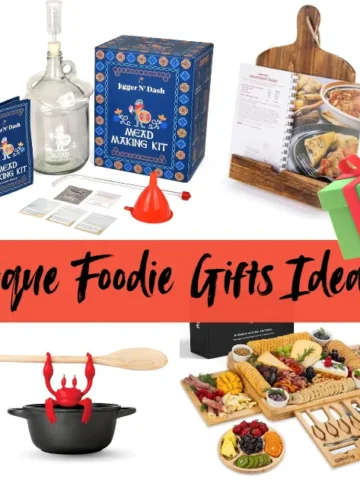
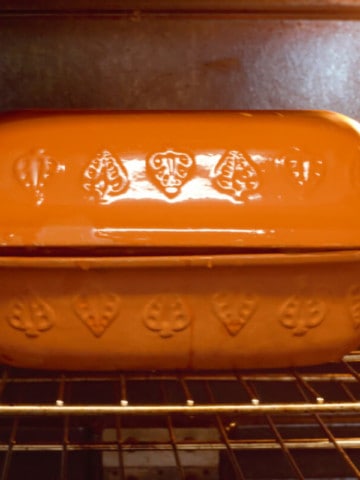
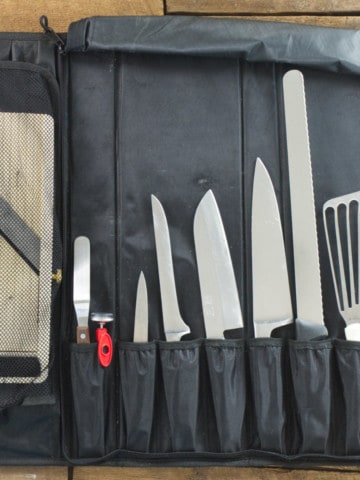
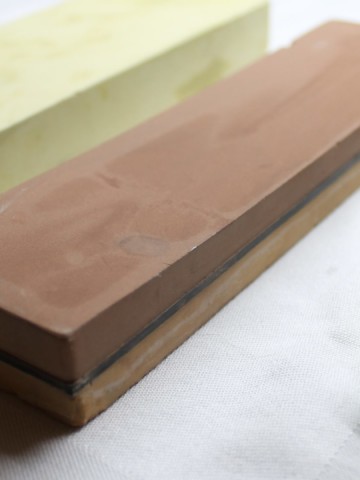
Nelly
Such a great read! Ive Recently been Overwhelmed with exactly this! Thanks fir a great post and simplifying The kitchen basics!
Chef Markus Mueller
You're welcome Nelly! Glad the post helped!